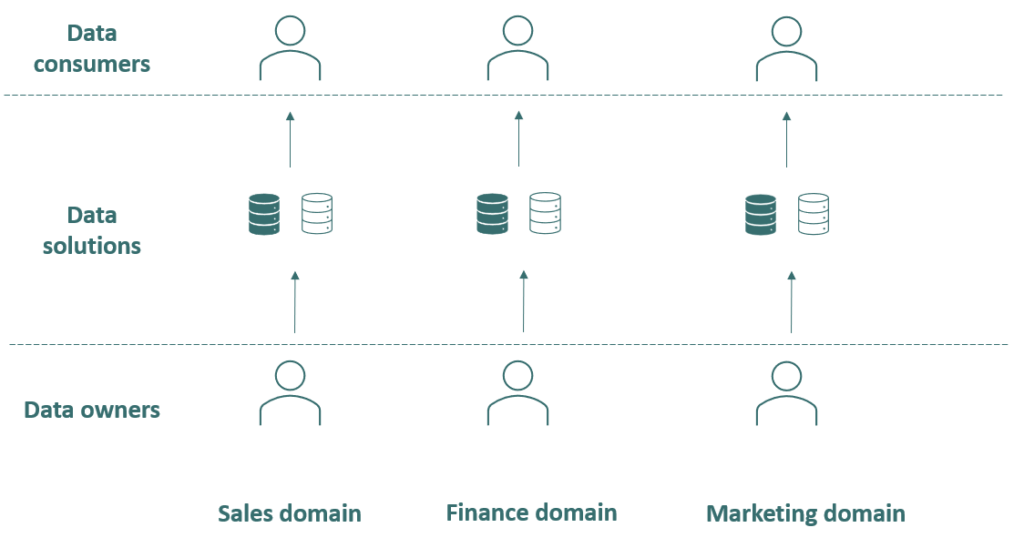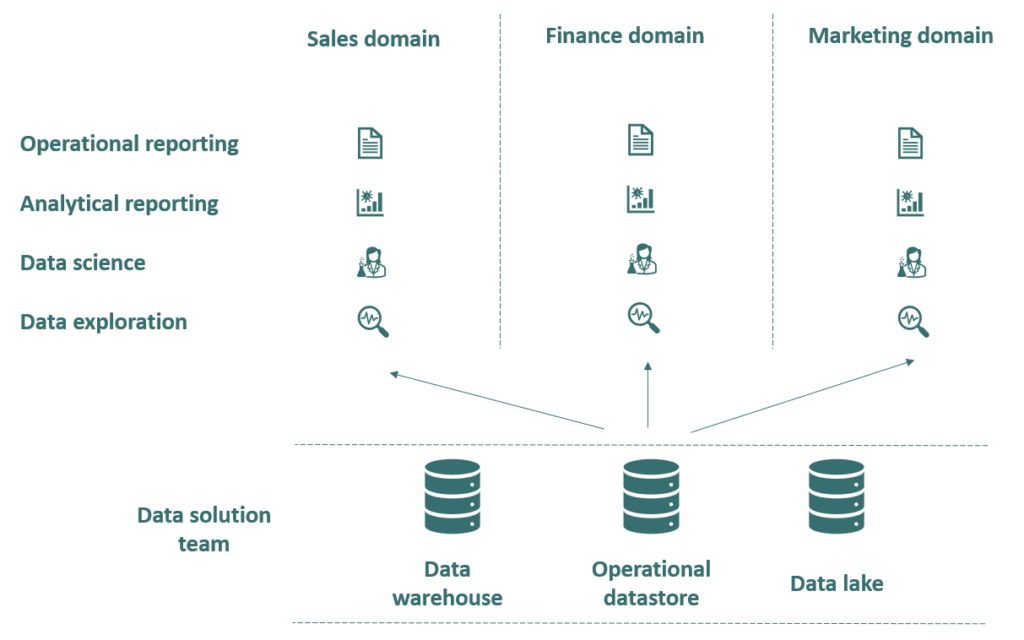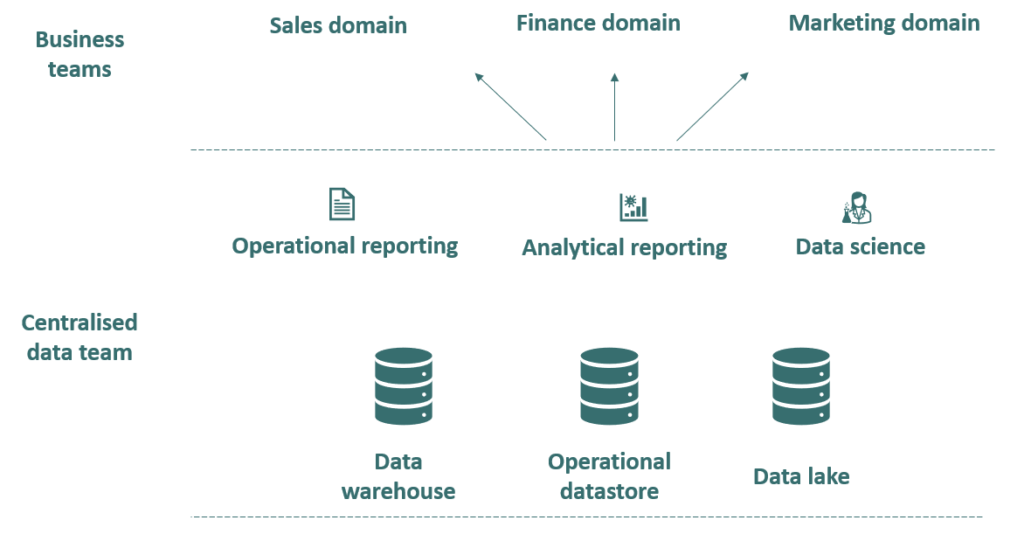At their core, business intelligence, analytics and reporting solutions aim to provide data, information and insights to people who need them. There are many ways teams can be organised to deliver these solutions, getting the correct team and organisational structure is often more important than the tools and technologies you choose. We’ll look at just a few ways teams can be organised in this article and show some advantages and disadvantages of each.
Let’s assume we’re studying an organisation that has several business applications, some may have data shared between them (integrated), some on premise, some in the cloud, and some business processes will involve many applications. Each application stores data relating to the business process its being used for (in an application database).

The outcome of many business processes, performed in many business applications, is data stored in many application databases.
In addition to this business process data, your organisation will need data from other sources, perhaps online market trends from external websites, system logs from your servers, social media feeds, images to analyse etc.

The result is complex; many data sources are needed by many people in your organisation, for many different purposes.
That data will be moved, perhaps into a Data lake, a Data warehouse, or Operational data store, it may require cleaning, integrating and modelling (organising) depending on how it will be used. This work is undertaken by specialist data technicians before its ready to be used by data scientists, data analysts or report developers to get value from it.
The examples below show how these data specialists and data teams can be organised within your business.
Domain owned solutions:
In a Domain driven design, development of data solutions is completed separately in each business domain or department e.g. Sales, Marketing, Finance, develop their own solutions to meet the needs of their department or domain, other departments and domains then become their consumers. Although built separately, the same underlying platform, technology and frameworks can be used.
Advantages:
- Each business domain or department can prioritise and focus on their own solutions in line with their requirements
- Can help if collaboration across domains is difficult or if there is a lack of domain knowledge outside of the business domain
Disadvantages:
- Getting cross domain insights maybe difficult if strong governance is not adhered to, the eventual cost of data solutions maybe higher
- Some business domains may not have the inclination to own their data solution, each domain will require specialist data engineers
- It may not be viable to maintain data solution teams in each domain once the initial development is completed

Hybrid & Self Service Analytics:
Where the domain owned design moved the data solution development to individual business domains, a Hybrid, Self Service Analytics structure has the final steps of data analysis, report and dashboard design or data exploration performed within the business domains. A central team is responsible for gathering, storing and manipulating data (the Data lakes, Data warehouses or Operational data stores), the output is then consumed within each domain.
Advantages:
- Departments are able to create and own reports, dashboards and analysis utilising their domain knowledge of the data they contain
- Departments with greater appetite for reporting and analytics can prioritise and focus on this activity as required
- The data solution team can share domain knowledge and support and become a central point of contact
Disadvantages:
- You will need to have reporting and analytics tools available to perform these tasks in each department
- Staff will require the skills and training needed to use these tools
- The central area responsible for the development of the data platforms may become a bottleneck if not properly staffed

Centralised Analytics:
A single team or area is responsible for delivering analytics, reporting and data solutions within the organisation. The resulting reports, dashboards, analysis and insights are then consumed within each business domain or department, changes or additions are passed back to the central area for delivery, where these new or changing requirements are developed.
Advantages:
- Governance and control of reporting and data solutions can be more easily controlled
- Support and maintenance are centralised and universal
Disadvantages:
- This central team will require large investment, unless properly staffed could become a bottleneck
- Managing priorities across multiple domains can become complex

What works for one organisation may not for another, some use hybrids of the examples shown. As we mentioned at the start of this article the aim is to provide data, information and insights into the hands of those who need it. These consumers are key, the more focus you can give to meeting their needs will improve the success and uptake of your data initiatives.


